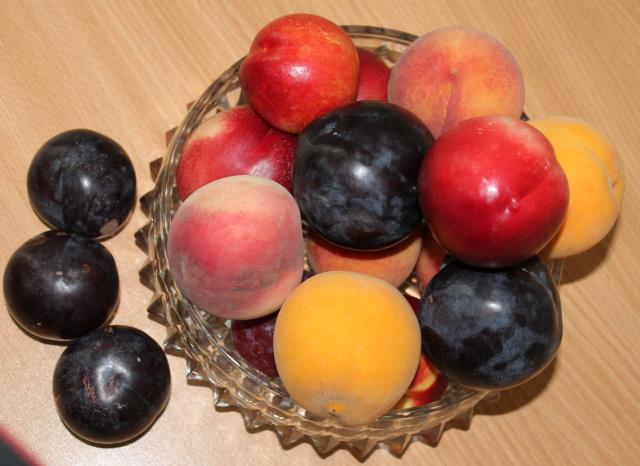By Beatrice Hawkins
Further to stone fruit from two weeks ago I thought it was time to find out a little more about apricots in the area and generally.
They are a particular favourite with me but for many years now I have been disappointed every time I have purchased some from the supermarkets. Once again, the old favourite varieties seem to be gone and the new ones available look wonderful, travel well and have a good shelf life but I am left wondering why I bother buying them as the delicious flavour is just not there anymore.
I do however, usually make the effort to go to some of the roadside stalls that sell directly from the growers and I am never disappointed with the flavour of the freshly-picked fruit. The result of this last year was an abundance of beautiful fruit that was de-stoned and put in the freezer for jam-making later. It has now been processed and has produced some of the best flavoured jam I have made in years – lovely, a family favourite.
Apricots were cultivated as early as 2000 BC in China and Central Asia and from there spread via the Great Silk Road. It is thought Chinese traders introduced apricots to the Persians who called them yellow plums. Peaches, apricots, pears, apples and almonds all belong to the same family, rosaceae, but apparently didn’t all originate from the same regions.
There are only 5 or 6 growers in the Stanthorpe region who rely solely on stone fruit production now but approximately 30 growers have some trees in conjunction with apples or other activities on their farms.
A niche climate area just to the west of Stanthorpe has been successfully filling an early market gap for stone fruit for approximately 40 years with production peaking a few years ago. The fruit was welcomed by the market each year and some was also exported.
As with a lot of primary production, drought and lack of water security has had a big impact over the last many years.
Other than the vagaries of the weather, fruit fly and brown rot are the major problems for the growers and some spraying is required each year.
On one of the properties that we owned there were a couple of very old trees that did exceedingly well and, as we were relatively isolated, fruit fly was not a big problem. My husband also grew a great vegetable garden in a paddock on the side of the creek here with lots of tomatoes, cucumbers and melons of many varieties.
In later years on another property where we grew commercial quantities of lucerne, the children each year grew melons, cucumbers, tomatoes and corn in rows along the fence so each time the lucerne was irrigated everything got watered. A ute-load of produce was sold each Sunday as people passed on their way to either Keepit or Split Rock dam for the day out… good pocket money for the kids. Mind you I think mum and dad did more weeding than the kids!
Apricots like an open sunny position to do well, good drainage and, while there seems to be some disagreement among the “experts” as to when to fertilise, they all agree that a fertiliser high in potassium and phosphorous and low in nitrogen is the best for apricots.
While there is disagreement about fertilising they all agree that water is a must during hot summers and after harvest especially, in order to have good flowering the following year. A good watering on the dip line of the tree once a week seems to be the recommendation. Trees don’t like rain at flowering or when the fruit is almost ripe and it was suggested that in a home garden situation large beach umbrellas can be used to protect the trees at such times. I can just imagine how this would look if you had a large block and a few trees… very decorative and would surely give the neighbours a laugh!
As with most fruit trees, pruning the tree into a vase shape is ideal as it allows for good air flow and reduces risk of fungal infections due to humidity. I’ve noticed that not just apricots, but a lot of stone fruit, bears heavily one year with a leaner crop the next. If you find this is the case the idea is to remove some of the fruit in the heavy year so the tree doesn’t put all its strength into fruit production that year but has some reserves for the next. Maybe timing of fertilising can overcome this problem too. How I wish I had taken more time with my wonderful father in law when he was pruning the farm orchard at Mudgee. However small children took precedence in those years and then we shifted elsewhere and no orchard! So much wonderful knowledge was missed.
*This is an old article that has been digitised so our readers have access to our full catalogue.







